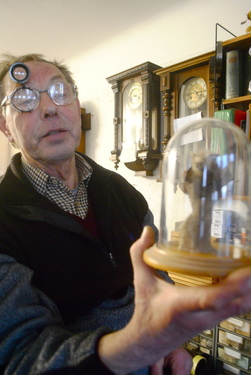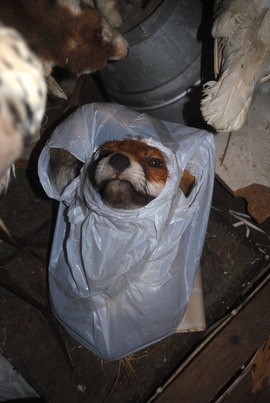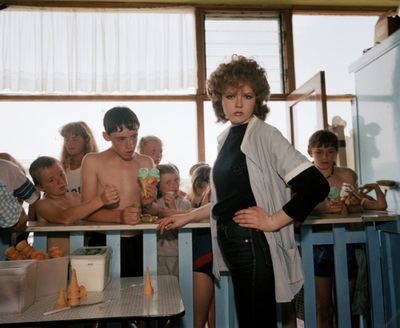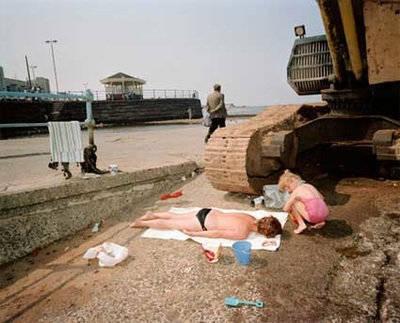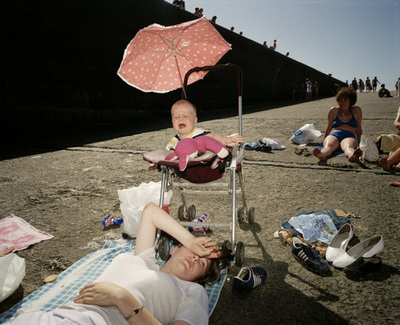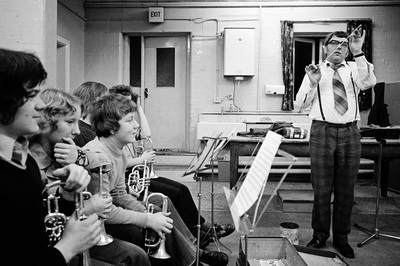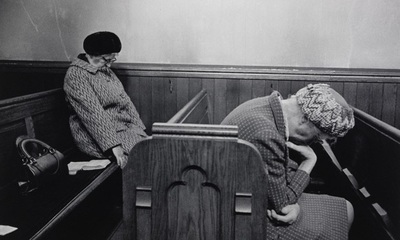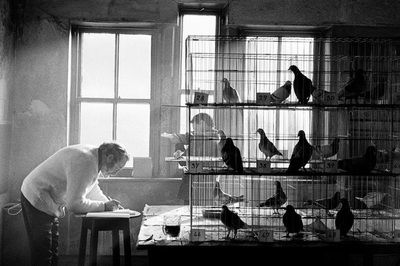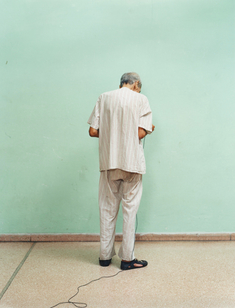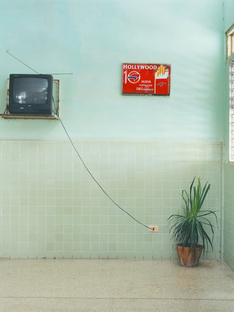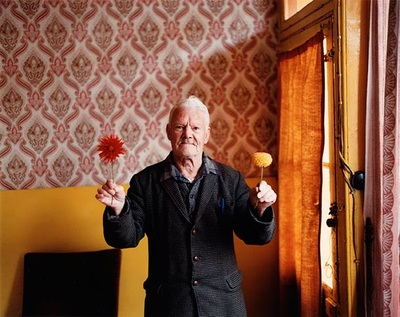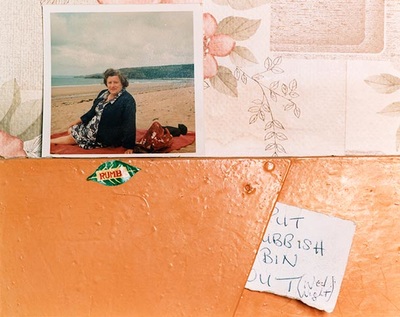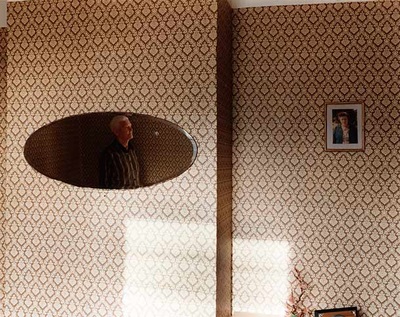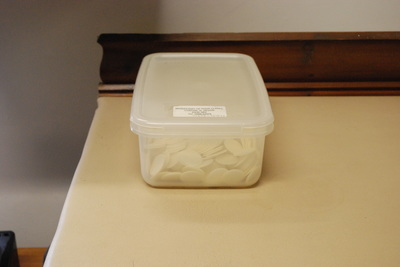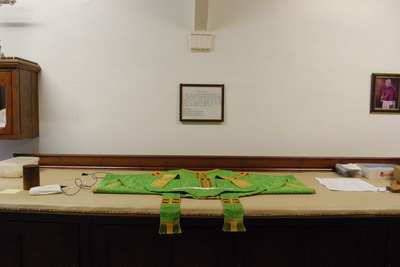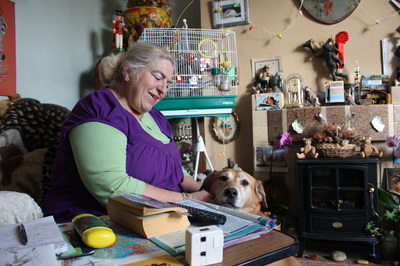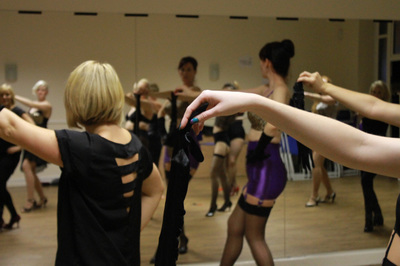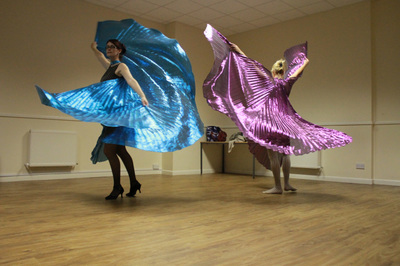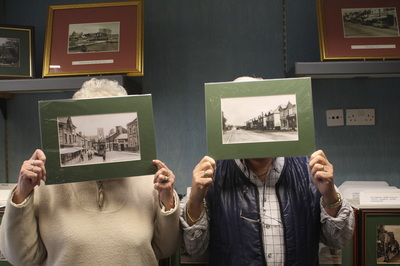Post 16 lesson plan:
A practical introduction to Documentary Photography
|
From Chris Francis, St Peter's School
This project encourages students to go out on location and to experience first hand the challenges of being a documentary photographer. When the project is first introduced to students it can seem daunting - I've had reactions from nervous laughter to full blown panic. However, it is the one project I revisit each year. Once the initial concerns are navigated it has a lasting impact on students' understanding and, importantly, their confidence. It is a delight to see those students that initially are filled with anticipation, returning with exciting stories and new work.
The ambitious objectives, beyond a deeper understanding of documentary work are to:
|
How does the project work?
A Dog Racing Track, Fire
Station, Ballroom Dancing Class, Dog Training Class, Boxing Gym, Vets
Surgery, Amateur Dramatic Society, Car Boot Sale, Behind the scenes in a Fish and Chip
Shop...Place of Worship...Charity Shop...
|
Students have to independently arrange a visit to their selected location, developing a body of work that culminates in 6 final, selected images.
These are the accompanying instructions provided to students:
|
Preparing students for the documentary challenge
Once the locations have been drawn students are very receptive to finding out more about different approaches to documentary photography. There are, of course, many photographers that can support this part of the project.
Martin Parr's early black and white work, such as his Hebden Bridge series, is a good example of a photographer embedding themselves within a community to become a familiar and accepted presence. These photos are interesting to discuss alongside his more familiar projects, such as The Last Resort. His images often manage to balance subtle humour with an affectionate nod towards the absurdities of human behaviour.
Martin Parr's early black and white work, such as his Hebden Bridge series, is a good example of a photographer embedding themselves within a community to become a familiar and accepted presence. These photos are interesting to discuss alongside his more familiar projects, such as The Last Resort. His images often manage to balance subtle humour with an affectionate nod towards the absurdities of human behaviour.
|
Adam Broomberg and Oliver Chanarin's epic journey through 12 modern ghettos, starting in a refugee camp in Tanzania and ending in a forest in Patagonia, provide powerful insights into the lives of others less fortunate. The use of both stillness and space in their work can create a more detached, objective quality.
"Broomberg and Chanarin's photographs make clear gestures towards the heritage of documentary photography. They use a large format camera, which requires a tripod, and makes the taking of photographs a slow and conspicuous act." V&A resources |
Julian Germain's project, For every minute you are angry you lose sixty seconds of happiness, is a series of photographs made over 8 years of the quiet, contemplative existence of Charles Snelling, an elderly man living alone in a small house in Portsmouth. The work is a warm and sensitive insight, incorporating a range of approaches from still life to informal portraits.
|
Through looking at and discussing a wide range of examples students can begin to form decisions on the styles and approaches which might serve them best. Of course it is always easier said than done; when it comes to photographing strangers, students are often petrified at the prospect.
However, it can be important to stand back as a teacher. It's not a bad thing to allow for struggle – the problems encountered and mistakes made will provide very valuable discussions. Students are often very receptive to a second or even third visit once they have started. Of course it’s very much about mindset. One challenge is to shift student thinking: This is not a task set by the teacher that needs ticking off; it’s an opportunity to meet someone interesting; to learn from them, and to craft something meaningful as a result. |
To go and take the portrait is one thing; to apply recently learned knowledge under pressure – whether related to lighting, composition, or dealing with people – is something else. A selection of student responses to the documentary challenge
|

